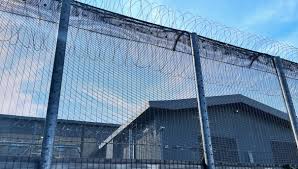
Breaking News
 Bitcoin Circular Economies and a Bridge Between Las Vegas and Peru
Bitcoin Circular Economies and a Bridge Between Las Vegas and Peru
 'Right of Return' for Israeli Child Predators Fleeing U.S.
'Right of Return' for Israeli Child Predators Fleeing U.S.
Top Tech News
 Magnetic Fields Reshape the Movement of Sound Waves in a Stunning Discovery
Magnetic Fields Reshape the Movement of Sound Waves in a Stunning Discovery
 There are studies that have shown that there is a peptide that can completely regenerate nerves
There are studies that have shown that there is a peptide that can completely regenerate nerves
 Swedish startup unveils Starlink alternative - that Musk can't switch off
Swedish startup unveils Starlink alternative - that Musk can't switch off
 Video Games At 30,000 Feet? Starlink's Airline Rollout Is Making It Reality
Video Games At 30,000 Feet? Starlink's Airline Rollout Is Making It Reality
 Automating Pregnancy through Robot Surrogates
Automating Pregnancy through Robot Surrogates
 SpaceX launches Space Force's X-37B space plane on 8th mystery mission (video)
SpaceX launches Space Force's X-37B space plane on 8th mystery mission (video)
 This New Bionic Knee Is Changing the Game for Lower Leg Amputees
This New Bionic Knee Is Changing the Game for Lower Leg Amputees
 Grok 4 Vending Machine Win, Stealth Grok 4 coding Leading to Possible AGI with Grok 5
Grok 4 Vending Machine Win, Stealth Grok 4 coding Leading to Possible AGI with Grok 5
Immigration Detention Has Become A Booming Business For Private Prison Giants

Amid escalating anti-immigrant rhetoric and legislative crackdowns at the state and federal levels, private prison corporations are once again expanding their grip on U.S. detention policy. In fact, today roughly 90 percent of detained immigrants are held in privately operated facilities, the highest share in history.
This industry exists despite years of promises to phase out for-profit incarceration that started in 2016 with President Barack Obama and were renewed by President Joe Biden when he took office. Unfortunately, these promises focused exclusively on the Bureau of Prisons and excluded immigration detention. As such, through their presidencies most federal contracts with private prison corporations remained untouched in the immigration detention space.
Now, with another Trump presidency, the industry is instead preparing for explosive growth. On recent earnings calls, CoreCivic executives announced plans to triple the number of beds in their facilities within a few months. That would mean an additional $1.5 billion in revenue for the corporation, more than doubling its annual earnings.
Meanwhile, growing scrutiny of immigration detention practices has led to reports of abuse, medical neglect, and deaths in custody. Privatization, with the cost-cutting practices that define it, is the structural driver of human rights violations at these facilities.
We discuss this all at length in our recently released book, The Prison Industry: How it Works and Who Profits (The New Press, 2025). But as we also explain, private prisons corporations are just one piece of the sprawling prison industry. The U.S. carceral system is comprised of a vast and deeply entrenched network of public-private partnerships that make billions from incarceration and detention every year.
Commissary corporations mark-up basic hygiene items like toothpaste or tampons by 300 percent or more. Private healthcare providers routinely deny or delay treatment, contributing to suffering and preventable deaths behind bars. Private food vendors serve meals that are frequently expired or nutritionally inadequate, all in the name of cutting costs and maximizing returns.
To understand how we arrived at this moment, we must pause and get familiar with the larger machinery that gave rise to it. The private prison industry did not emerge in isolation; it is the product of decades of deliberate policy choices that fused mass incarceration and detention with private profiteering.

 How Great Powers Fall Apart
How Great Powers Fall Apart
 Zionism Is What It Does
Zionism Is What It Does HERE COMES THE MOTHERSHIP
HERE COMES THE MOTHERSHIP Venus Aerospace Hypersonic Engine Breakthroughs
Venus Aerospace Hypersonic Engine Breakthroughs

